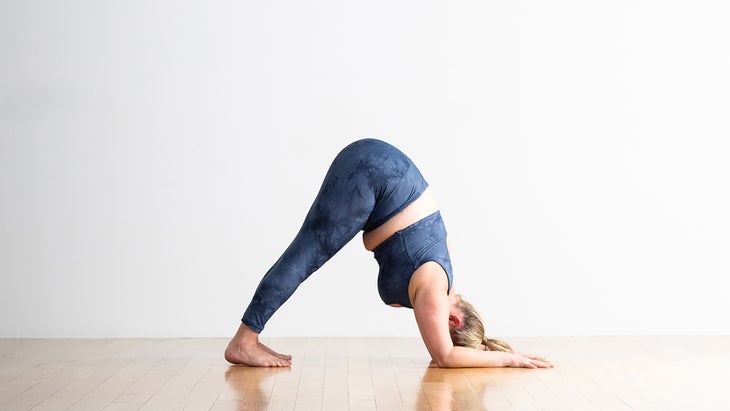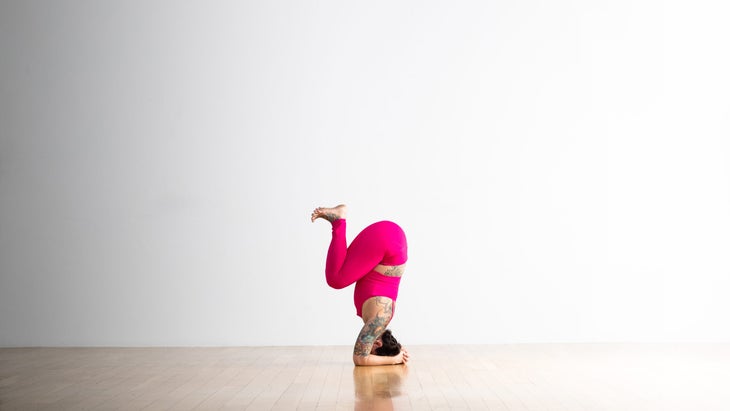How one can Apply Salamba Sirsasana
“], “filter”: { “nextExceptions”: “img, blockquote, div”, “nextContainsExceptions”: “img, blockquote, a.btn, a.o-button”} }”>
Heading out the door? Study this textual content on the model new Exterior+ app on the market now on iOS devices for members!
>”,”determine”:”in-content-cta”,”form”:”hyperlink”}}”>Acquire the app.
Salamba Sirsasana (Supported Headstand) is an energizing inversion that will depend on the ability of your larger physique and core, whereas centering and focusing your ideas.
Though there are many bodily benefits, along with establishing leg, arm, and core energy, it’s a tough pose that you will want to technique with a “safety first” mentality. The essential factor to this asana is to steer clear of placing weight in your head and neck. In its place, let your arms and shoulders preserve you up.
Supported Headstand fundamentals
Sanskrit: Salamba Sirsasana (sah-LOM-bah shear-SHAHS-ah-nah)
Pose form: Inversion
Targets: Core
Why we prefer it: The funnest method to use Headstand? Attempt it in a doorway. Strolling the toes up the doorjamb and into the pose makes it doable to do with assist and with out relying on momentum to kick myself up into it,” says Tamara Jeffries, Yoga Journal‘s senior editor.
Pose benefits
Supported Headstand improves physique consciousness, circulation, and posture. It’ll presumably help reduce swelling in your ankles and toes, improve vitality, battle fatigue, and assemble confidence.
Supported Headstand: Step-by-step instructions
- Start in your fingers and knees in fingers and knees. Lean forward and place your forearms on the bottom in entrance of you. Carry your fingers collectively and interlace your fingers, tucking your bottom pinky finger inside so the outer edges of your fingers are safe on the mat. Carry your elbows barely slender than shoulder-distance apart.
- Place the crown of your head on the bottom with the once more of your head in opposition to your palms. Press down alongside along with your forearms and elbows and allow your head to return barely off the bottom.
- Tuck your toes, elevate your knees, and straighten your legs in Dolphin Pose. Proceed to press firmly by the use of your arms, conserving weight off your head. Draw your shoulder blades away out of your ears. Then stroll your toes in direction of your head until your hips are above your shoulders.
- Bend your knees and use your core to slowly elevate one or every your legs off the bottom, conserving your knees bent and legs collectively and tucked into your chest. Work together your core and proceed to press down by the use of your arms and draw your shoulders away out of your ears. Slowly straighten your legs, individually or collectively, until they’re immediately above your shoulders, reaching your legs in direction of the ceiling.
- Uncover your steadiness proper right here, which could take apply. Shifting your weight as need be to take care of your ankles stacked over your head.
- Hug your thighs collectively as you straighten your legs. Elevate and lengthen by the use of all sides of your torso.
- Sustain as long as you feel cozy and sturdy. If at any stage you feel elevated pressure in your head and neck, immediately come out of the pose. Use your abdomen energy to slowly lower your legs whereas persevering with to press down by the use of your forearms. Take your time as you slowly convey your toes once more to the mat in Dolphin Pose. Make your method into Child’s Pose.
Beginner’s solutions
Apply this tough inversion solely beneath the cautious supervision of a coach who’s accustomed to your apply. Uncertain do you have to’re ready? Proper right here’s discover ways to know.
- Depend upon some assist. Apply in opposition to a wall or in a doorway (see above). Take one foot, then the other away from the wall as you uncover additional energy and steadiness throughout the pose.
- It’ll presumably help to remind your self that this pose is rather like completely different poses nonetheless with a more durable relationship to gravity. Work together your core, legs, and arms the an identical method you’d in Tadasana or Forearm Plank.
- Yoga coach Alexandria Crow explains that as you’re practising the pose, “Your pelvis might shift earlier your shoulders to create a counterweight in your legs on this transition pose. Protect your core engaged and be sure the burden in your head doesn’t intensify. If it does improve—at any stage—return to having just one leg up, or to Forearm Plank.”
- Start small. Try to attend for 10 seconds, then steadily add 5 to 10 seconds at a time. It’s larger to hold a robust 20-second pose than a three-minute pose that lacks integrity.
- Exit with grace. Use your abs to lower the legs in a clear motion. Come down with an exhalation, with out shedding the elevate of the shoulder blades.
Instructing Salamba Sirsasana
These cues could assist your faculty college students uncover steadiness and safe alignment.
- Press the lengths of your inside and outer forearms into the mat, whereas trying to boost off the mat. The combination of development and contraction will allow you to protect integrity throughout the pose.
- Start with an reliable analysis of your bodily, psychological, and emotional state. Stay away from the pose while you’re pressured, your sleep is compromised, you is likely to be fatigued, or completely different components are affecting your well-being.
Variation: Supported Headstand prep

Apply Dolphin Pose in preparation for or in its place of Headstand. Come into the posture alongside along with your elbows and forearms on the mat. Apply strolling your toes in direction of your fingers and bringing your once more perpendicular to the bottom.
Variation: Supported Headstand with knees tucked

Apply discovering your steadiness and equilibrium alongside along with your knees bent and your legs tucked as close to the torso as doable. Protect a neutral spine.
Preparatory Poses
Adho Mukha Svanasana (Downward-Coping with Canine Pose)
Forearm Plank
Dolphin Pose
Counter Poses
Uttanasana (Standing Forward Bend)
Balasana (Child’s Pose)
Contributors embrace Alexandria Crow.






